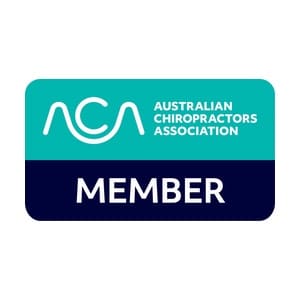Disc Injuries can be a common injury to the back and spine and mostly occur in the lumbar spine (lower back) or the cervical spine (neck). The spine is made up of bones called vertebrae which are separated by discs that act like shock absorbers. Discs are made of tough cartilage, with a soft, jelly-like fluid inside. The discs between your vertebrae allow the flexibility of motion in the spine. The discs also allow an exit and entry point for spinal nerves that carry messages to the brain and body.
 Disc injuries can be painful and restricting. People often hear about ‘slipped discs’. The discs of the spine are attached to the vertebra, so they don’t actually ‘slip’. A disc injury can refer to a number of disc problems.
Disc injuries can be painful and restricting. People often hear about ‘slipped discs’. The discs of the spine are attached to the vertebra, so they don’t actually ‘slip’. A disc injury can refer to a number of disc problems.
Disc bulge:
This occurs when the soft material of the disc pushes either forward or backward out of position. This results in swelling and painful pressure to the area.
Disc tear:
A disc tear occurs when a small tear or crack appears in the outer rim of the disc and can lead to fluid leaking from the disc. This is the most common form of disc injury.
Disc herniation:
A herniation refers to the fluid within the centre of the disc rupturing through the outer fibres, stretching the disc beyond its normal limits.
Disc prolapse:
A condition in which part of the disc tears away and becomes a free-floating fragment.
Disc desiccation:
This occurs when the disc loses its fluid, degenerates, and becomes worn down.
Disc injuries are often caused by a build-up of minor damage, rather than a single major incident. These minor episodes include poor posture, poor lifting and bending techniques, or repetitive action. These episodes can place pressure on the disc that builds up until a small movement, such as standing or bending, sets off painful symptoms.
All of these disc injuries can vary in the type and severity of symptoms. A disc bulge can push onto nerves in the spine, resulting in a lot of pain and limited movement. On the other hand, people can have disc bulges and experience little to no pain, or referred pain elsewhere in the body. For this reason, it is important to be assessed for the underlying cause of disc pain, to ensure that treatment matches the injury.
Most disc injuries will respond favourably to Chiropractic care. Chiropractic is a holistic option that examines the entire musculoskeletal system, rather than focussing on only the symptoms of disc injury. This method identifies areas of weakness in the spine that may contribute to any disc problems, as well as targeting the site of the disc pain. At Back to Basics Chiropractic, treatment for disc injuries usually involves specific muscle release, spinal adjustments, and traction. Gradually, rehabilitation exercises will be given as the condition improves, involving stretches and strengthening to stabilise the condition.
Book an appointment with one of our Chiropractors at Kogarah or Parramatta, Click Here.
1. J Manipulative PhysiolTher. 2004 Mar-Apr;27(3):197-210.Safety of spinal manipulation in the treatment of lumbar disk herniations: a systematic review and risk assessment. Oliphant D.
FAQs
What is a disc injury?
A disc injury refers to the damage or degeneration of spinal discs. Discs are made of very tough cartilage, with a soft, jelly-like fluid inside, and sit between your vertebrae. They critically allow the flexibility of motion in the spine, as well as act as an exit and entry point for spinal nerves which carry messages to the brain and body.
What is the difference between a bulging disc and a herniated disc?
A bulging disc occurs when the soft material of the disc pushes either forward or backward out of position. This results in swelling and painful pressure to the area. In contrast, a herniation is when the inner liquid of the disc ruptures through the outer layer, stretching the disc beyond its normal limits.
What causes disc injuries?
Disc injuries can be caused by a range of factors, including age, wear and tear, trauma or injury, repetitive strain on the spine, spinal misalignment, poor posture, and genetics.
How can a chiropractor treat a disc injury?
Chiropractic treatment for disc injuries usually involves specific muscle release, spinal adjustments, and traction. As your condition improves, chiropractors can also create a rehabilitative exercise plan to continue to stretch, strengthen and stabilise the disc.
Can you prevent a disc injury?
Maintaining a healthy diet and weight, avoiding heavy lifting or repetitive bending, staying active and mobile, and practicing good posture can aid in preventing disc injuries.





